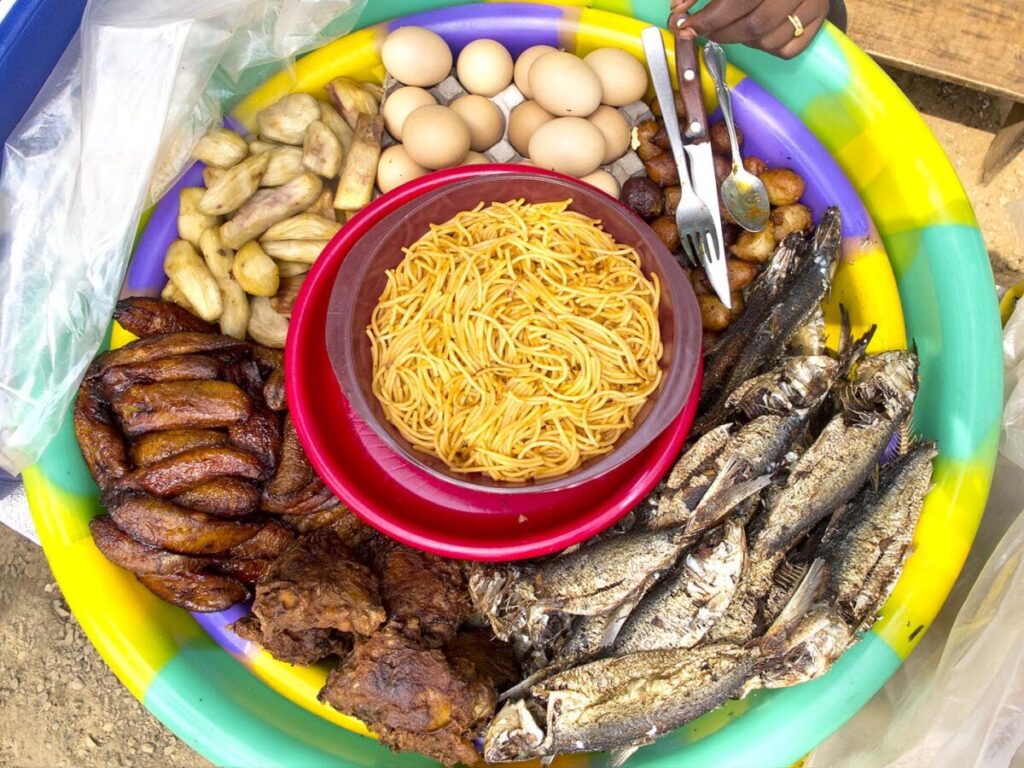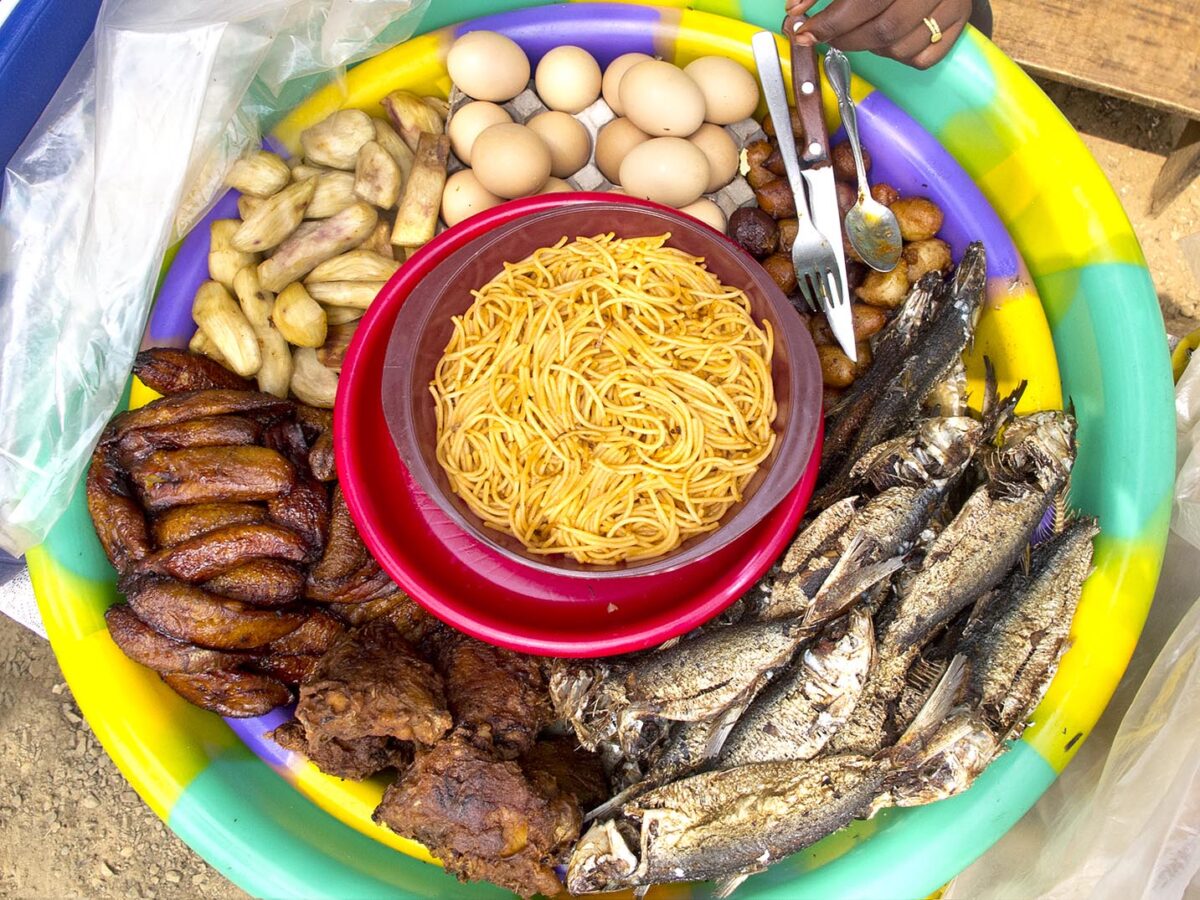
A Culinary Journey: Exploring the Rich Flavors of Sierra Leone Food
Sierra Leone food is a vibrant tapestry woven from West African traditions, colonial influences, and the resourcefulness of its people. More than mere sustenance, it is a cultural cornerstone, reflecting the nation’s history, community spirit, and deep connection to the land. This article delves into the heart of Sierra Leonean cuisine, exploring its key ingredients, iconic dishes, unique cooking methods, and the stories behind the flavors that define this West African nation. Whether you’re a seasoned foodie or simply curious about global culinary traditions, prepare for a mouthwatering exploration of Sierra Leone’s rich and diverse food culture.
Unveiling the Essence of Sierra Leonean Cuisine
Sierra Leonean cuisine is characterized by its use of fresh, locally sourced ingredients and bold, spicy flavors. The country’s fertile land yields a bounty of crops, including rice, cassava, plantains, sweet potatoes, and a variety of vegetables. Seafood is also a staple, thanks to Sierra Leone’s extensive coastline. These ingredients are skillfully combined with spices like ginger, garlic, chili peppers, and groundnut (peanut) to create dishes that are both flavorful and satisfying.
At the heart of Sierra Leonean cooking lies a deep respect for tradition. Recipes are often passed down through generations, with each family adding their own unique twist. Communal cooking is also common, especially during celebrations and ceremonies, fostering a sense of togetherness and shared heritage.
Staple Ingredients that Define Sierra Leone Food
- Rice: The undisputed king of the Sierra Leonean table, rice is served with almost every meal. Different varieties are used, from the everyday white rice to the more fragrant and nutritious brown rice.
- Cassava: This starchy root vegetable is a versatile ingredient, used in everything from stews and soups to fritters and dumplings.
- Plantains: Whether ripe and sweet or green and starchy, plantains are a beloved ingredient, often fried, grilled, or added to stews.
- Groundnuts (Peanuts): Groundnuts are a key ingredient in many Sierra Leonean dishes, adding richness and flavor to soups, stews, and sauces.
- Seafood: With a long coastline, Sierra Leone boasts a wide variety of fresh seafood, including fish, shrimp, crabs, and lobster.
- Leafy Greens: A variety of leafy greens, such as spinach, potato leaves, and cassava leaves, are used in soups and stews, providing essential nutrients and a distinct flavor.
Cooking Methods: A Blend of Tradition and Innovation
Sierra Leonean cooking methods are a blend of traditional techniques and modern innovations. Open-fire cooking is still common in rural areas, while gas and electric stoves are more prevalent in urban centers. Grilling, frying, boiling, and stewing are all popular methods, each lending its own unique character to the dishes.
One distinctive cooking method is the use of “stone ovens,” which are essentially large clay pots heated with firewood. These ovens are used to bake bread, roast meats, and cook other dishes, imparting a smoky flavor that is characteristic of Sierra Leonean cuisine.
Iconic Dishes: A Taste of Sierra Leone
Sierra Leone’s culinary landscape is dotted with iconic dishes that are beloved by locals and visitors alike. These dishes showcase the country’s diverse flavors and culinary traditions, offering a true taste of Sierra Leone.
Groundnut Stew: A National Treasure
Groundnut stew, also known as peanut stew, is arguably Sierra Leone’s most famous dish. This rich and flavorful stew is made with groundnuts, tomatoes, onions, peppers, and a variety of spices. It can be cooked with chicken, beef, fish, or vegetables, making it a versatile and satisfying meal. Served with rice, groundnut stew is a staple in Sierra Leonean households and restaurants.
Plasas: A Symphony of Greens
Plasas is a hearty and nutritious stew made with a mix of leafy greens, such as spinach, potato leaves, and cassava leaves. These greens are cooked with onions, peppers, and spices, and often include meat or fish for added flavor. Plasas is a popular dish in Sierra Leone, especially during the rainy season when fresh greens are abundant. It’s often served with rice or fufu (a starchy dough made from cassava or plantains).
Cassava Leaves: A Culinary Adventure
Cassava leaves are another popular ingredient in Sierra Leonean cuisine. They are cooked with a variety of ingredients, including onions, peppers, spices, and groundnuts, to create a flavorful and nutritious stew. Cassava leaf stew is often served with rice or fufu and is a staple in many Sierra Leonean homes.
Fufu: A Starchy Staple
Fufu is a starchy dough made from cassava, plantains, or yams. It is a staple food in many West African countries, including Sierra Leone. Fufu is typically served with soups and stews and is eaten by hand. It has a slightly tangy flavor and a smooth, elastic texture.
Jollof Rice: A West African Classic
While Jollof rice is a popular dish throughout West Africa, each country has its own unique version. Sierra Leonean Jollof rice is typically made with rice, tomatoes, onions, peppers, and a blend of spices. It is often cooked with chicken, beef, or fish and is a popular dish for celebrations and gatherings.
The Cultural Significance of Sierra Leone Food
Sierra Leone food is more than just sustenance; it is an integral part of the country’s culture and identity. Food plays a central role in social gatherings, celebrations, and ceremonies, bringing people together and fostering a sense of community.
Sharing a meal is a sign of hospitality and friendship in Sierra Leone. Guests are often offered food and drink as a gesture of welcome, and it is considered impolite to refuse. Food is also used to celebrate important milestones, such as births, weddings, and funerals. Special dishes are prepared for these occasions, and the sharing of food is seen as a way to honor the event and strengthen social bonds.
The preparation of food is also a cultural activity, often involving multiple generations of women. Recipes are passed down from mothers to daughters, and the process of cooking together is a way to share knowledge, stories, and traditions. This communal aspect of food preparation reinforces family ties and preserves cultural heritage.
Exploring Sierra Leonean Drinks
No culinary journey is complete without exploring the local beverages. Sierra Leone offers a variety of drinks, both alcoholic and non-alcoholic, that complement its flavorful cuisine.
Ginger Beer: A Refreshing Classic
Ginger beer is a popular non-alcoholic drink in Sierra Leone, made from fresh ginger, sugar, and water. It is a refreshing and spicy beverage that is often served chilled. Ginger beer is also believed to have medicinal properties and is used to treat a variety of ailments.
Palm Wine: A Traditional Brew
Palm wine is a traditional alcoholic beverage made from the sap of palm trees. It is a slightly sweet and tangy drink that is often consumed during celebrations and ceremonies. Palm wine is tapped directly from the tree and can be consumed fresh or fermented.
Poyo: A Local Beer
Poyo is a locally brewed beer made from sorghum or millet. It is a popular drink in Sierra Leone, especially in rural areas. Poyo is typically brewed in small batches and has a slightly bitter and earthy flavor.
Sierra Leone Food and Tourism: A Growing Trend
As tourism in Sierra Leone grows, so does the interest in its unique culinary offerings. Visitors are eager to experience the authentic flavors of Sierra Leonean cuisine, and local restaurants and food vendors are catering to this demand. Food tours are becoming increasingly popular, offering tourists a chance to sample a variety of dishes and learn about the country’s culinary traditions.
The rise of culinary tourism is not only beneficial for the tourism industry but also for local communities. It provides opportunities for small-scale farmers, food vendors, and restaurants to showcase their products and services, boosting the local economy and preserving cultural heritage. By supporting local food businesses, tourists can contribute to the sustainable development of Sierra Leone.
The Future of Sierra Leone Food
Sierra Leone food is undergoing a period of exciting change and innovation. While traditional dishes remain popular, there is also a growing interest in modernizing and adapting Sierra Leonean cuisine to suit contemporary tastes. Chefs are experimenting with new ingredients and techniques, creating innovative dishes that showcase the country’s culinary heritage in a fresh and exciting way.
One notable trend is the fusion of Sierra Leonean cuisine with international flavors. Chefs are incorporating ingredients and techniques from other parts of the world to create unique and innovative dishes that appeal to a wider audience. This fusion of cultures is not only expanding the culinary landscape of Sierra Leone but also promoting cultural exchange and understanding.
Furthermore, there is a growing awareness of the importance of sustainable food practices. Farmers are adopting organic farming methods to produce healthier and more environmentally friendly crops. Restaurants are sourcing ingredients locally to reduce their carbon footprint and support local communities. This commitment to sustainability is ensuring that Sierra Leone food remains delicious and nutritious for generations to come.
Experience Authentic Sierra Leonean Flavors
Sierra Leone food offers a captivating glimpse into the heart and soul of this vibrant nation. From the rich and comforting groundnut stew to the refreshing ginger beer, each dish tells a story of tradition, community, and resilience. As you explore the culinary landscape of Sierra Leone, you’ll discover not only delicious flavors but also a deep appreciation for the country’s rich cultural heritage. Share your own culinary explorations and favorite Sierra Leonean dishes with other food enthusiasts, contributing to a global appreciation of this unique and flavorful cuisine.

